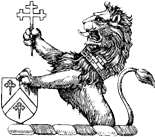
A Turning Point in History
CHRIST & NEIGHBOR
With this issue we inaugurate a new column, Christ and Neighbor by John C. Cort, to appear in each issue of the New Oxford Review. In 1936 John joined the Catholic Worker Movement in New York City, and subsequently became a founder of the Association of Catholic Trade Unionists, a labor journalist, a C.I.O. union officer, and a Peace Corps official in the Philippines. Currently he is a freelance writer living in Nahant, Massachusetts. — Ed.
Smart historians are reluctant to point to any one event as a major turning point. History is too complicated. But some points do stick out.
Back in the 1920s Pope Pius XI said, “The great scandal of the nineteenth century was that the Church lost the working class.” In America we don’t appreciate that lament because in this country it never happened to the extent it happened in Europe.
In Europe that loss created a vacuum that was filled by Marxism; and Marxism produced Lenin and Bolshevism; and these produced the Soviet Union; and the Soviet Union has not produced but contributed to the explosive mess we are in today. (We in the West have also contributed significantly to that mess.)
And what was the turning point? I nominate the evening of June 25, 1848. It was the fourth day of savage fighting in the streets of Paris, brought on by the government’s termination of work-relief projects that had kept large numbers of unemployed workers in a state of relative submission. The Revolution of February 1848 had been almost bloodless, but now was the bloody time.
You May Also Enjoy
Lester Thurow is an interesting man. I first encountered him back in the 1970s when…
Michael Harrington was an eloquent, attractive leader and lucid thinker. Even those who disagreed with him found it almost impossible not to love him.
Justice is an essential ingredient of love; love is not complete unless — to switch the metaphor — it is built on a foundation for social justice.

